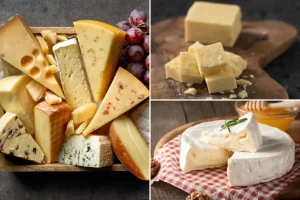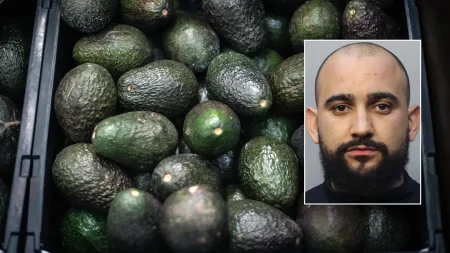Island Eco-Heroes: How a Fleet of Goats is Transforming Landscape Management by Sea
In the quiet dawn hours along a wooded shoreline, an unusual commute begins. A small herd of goats boards a weathered ferry, guided by their handlers with practiced ease. The animals seem unfazed by the gentle rocking of the boat as it pulls away from the dock, heading toward an island choked with invasive vegetation. This scene, while picturesque, represents a sophisticated ecological solution gaining traction worldwide—though few such operations require a maritime journey.
Across the globe, eco-grazing has emerged as a sustainable alternative to mechanical and chemical vegetation management. The concept is elegantly simple: leverage goats’ voracious appetites and their ability to navigate difficult terrain to clear unwanted vegetation. From California’s fire-prone hillsides to Germany’s urban parks, these four-legged landscapers are increasingly in demand. However, the floating goat brigades that service island ecosystems represent a specialized niche within this growing environmental movement, combining traditional agricultural knowledge with modern conservation challenges.
The Rising Tide of Caprine Conservation
“Goats have been clearing land since time immemorial,” explains Dr. Eleanor Weiss, an ecologist specializing in sustainable landscape management. “What’s changed is our scientific understanding of how precisely they can be deployed to address specific environmental challenges.” This precision has transformed goat grazing from an ancient agricultural practice into a sophisticated tool for environmental restoration, particularly in delicate island ecosystems where heavy machinery could cause lasting damage.
Island environments present unique conservation challenges. Their isolated nature often makes them more vulnerable to invasive species, while their limited size means invasions can quickly overwhelm native plants. Traditional clearing methods involving heavy equipment can damage sensitive soil structures and native seedbeds, while chemical approaches risk contaminating the surrounding waters. Enter the swimming goats—or more accurately, the sailing ones.
The Archipelago Restoration Project, operating in coastal regions across three continents, maintains fleets of specially trained goats that travel by boat to tackle invasive plants on islands too small or environmentally sensitive for conventional clearing methods. “These animals are selected for temperament as much as appetite,” notes Miguel Fernandez, the project’s founder. “Not every goat is comfortable with boat transport, but those that adapt become invaluable ecological assets.”
Maritime Meadow Management: A Day in the Life
Dawn breaks over the coastal waters as handlers prepare for another day of island restoration. The specialized transport vessels—modified pontoon boats with reinforced boarding ramps and designated animal holding areas—idle at the dock while the goat teams are loaded. Most operations involve 20-30 animals per trip, carefully selected based on the target vegetation and the specific island’s needs.
“Different goat breeds have different preferences and capabilities,” explains Sophia Chen, a veterinarian specializing in working animals. “Nubian goats excel at reaching high branches, while smaller breeds like Kinders can navigate dense underbrush more effectively. We customize each team based on satellite imagery of the target area.” This scientific approach marks a significant evolution from earlier, more haphazard grazing programs.
The journey itself rarely exceeds 30 minutes, as longer trips would stress the animals unnecessarily. Upon arrival, the goats disembark with surprising efficiency—the result of careful training and selection. Solar-powered electric fencing, deployed in advance by a small human team, contains the animals within the target area while protecting any rare native plants that need preservation.
Measuring Success in Hoofprints and Biodiversity
Environmental scientists closely monitor these floating goat operations, collecting data that has begun to demonstrate their remarkable effectiveness. “We’re seeing approximately 85% reduction in target invasive species after just three seasonal grazing cycles,” reports Dr. James Okafor, who studies the ecological impact of various clearing methods. “But what’s most impressive is the subsequent recovery of native species diversity, which increases by an average of 40% within two years.”
This success stems from the goats’ selective feeding habits and their minimal impact on soil structures. Unlike mechanical clearing, which often disturbs seedbeds and compacts soil, goat grazing preserves the physical environment while removing competitive pressure from invasive plants. Additionally, the animals’ digestive systems effectively neutralize most invasive seeds, preventing redistribution through excrement—a significant advantage over other removal methods.
The economic benefits have proven equally impressive. A comparative analysis conducted by the Environmental Resource Management Association found that island goat grazing operations cost approximately 60% less than equivalent mechanical clearing projects when measured over a five-year period. “The initial investment in specialized transport and fencing is offset by reduced labor costs and the elimination of expensive machinery maintenance,” explains financial analyst Rebecca Torres. “Plus, there’s the added benefit of fertilization, which accelerates native plant recovery without additional inputs.”
Navigating Challenges: From Regulations to Rough Waters
Despite their effectiveness, maritime goat operations face unique obstacles. Regulatory frameworks rarely anticipate livestock transportation by water, creating compliance challenges for operators. “The first time we applied for permits, officials didn’t know whether to classify us under agricultural transport or commercial boating regulations,” recalls Fernandez with a laugh. “We ended up complying with both, which nearly doubled our paperwork.”
Weather presents another significant challenge. While goats tolerate a wide range of conditions on land, rough seas can stress the animals and make loading and unloading dangerous. Most operations maintain flexible schedules, with satellite weather monitoring determining whether conditions permit water crossings. This uncertainty introduces logistical complexities but remains preferable to the environmental damage caused by alternative clearing methods.
Animal welfare considerations necessitate careful protocols. Veterinarians regularly assess herd health, and animals showing signs of stress are promptly retired from maritime operations. “These goats receive better healthcare than many pets,” observes Dr. Chen. “Their value as ecological restoration tools justifies the investment in their wellbeing.” This attention extends to comprehensive parasite management programs, ensuring the goats don’t inadvertently introduce harmful organisms to island ecosystems.
Global Expansion: From Experimental to Essential
What began as experimental projects has expanded into established programs across multiple continents. The Pacific Northwest’s Island Conservation Network now maintains five goat teams serving over 30 islands, while similar operations have emerged in the Mediterranean, Caribbean, and South Pacific. Government agencies increasingly incorporate goat grazing into official invasive species management plans, providing stable funding streams for these unique operations.
Climate change has accelerated this adoption, as rising temperatures enable invasive plants to spread more aggressively into previously resistant ecosystems. “Islands are ecological canaries in the coal mine,” explains Dr. Weiss. “The problems they face today often predict what mainland areas will encounter tomorrow. By refining these methods now, we’re developing solutions that may have much broader applications in the future.”
The social benefits extend beyond environmental restoration. Many programs partner with local agricultural communities, providing additional income streams for farmers who supply and help manage the animals. Educational components allow school groups to observe the goats in action, creating powerful learning experiences about ecological relationships and sustainable management practices.
The Future of Floating Flocks
As maritime goat grazing operations mature, technological innovations continue to enhance their effectiveness. Drone monitoring now allows for precise tracking of clearing progress, while GPS-enabled collars on lead animals help handlers optimize grazing patterns. Solar-powered fencing systems have become increasingly sophisticated, enabling more nuanced protection of sensitive areas.
Research into goat dietary preferences has led to breeding programs focused on developing herds with particular appetites for the most problematic invasive species. “We’re not genetically modifying the goats,” clarifies Dr. Okafor, “but rather using traditional selective breeding to enhance natural preferences. Some bloodlines show remarkable enthusiasm for plants like kudzu or English ivy that other goats avoid.”
The most promising development may be the integration of these programs into comprehensive ecosystem restoration initiatives. Rather than viewing goat grazing as merely a vegetation management technique, environmental planners increasingly recognize it as one component of holistic approaches that include strategic replanting, controlled burns, and careful reintroduction of native species.
As one ferry captain who regularly transports these unusual passengers observes: “I’ve spent forty years watching people try to fix environmental problems with bigger machines and stronger chemicals. There’s something profoundly right about watching these animals methodically undo our mistakes instead, one mouthful at a time—even if they do need a boat to get to work.”










